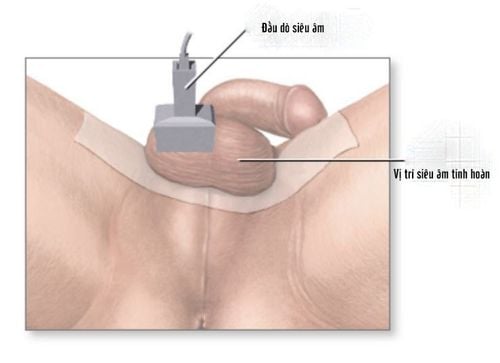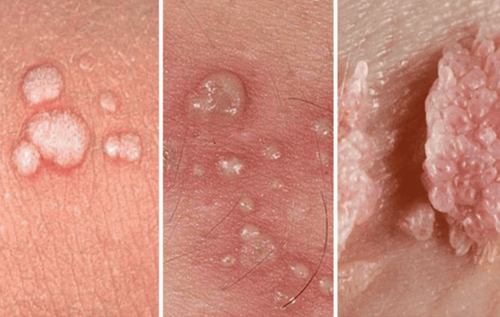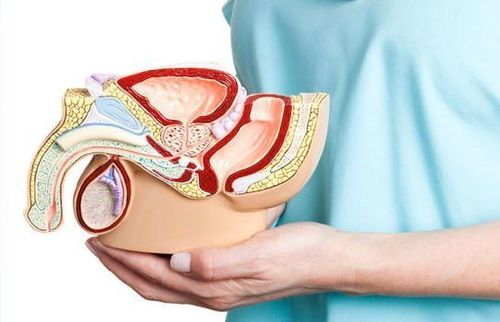This is an automatically translated article.
The article is professionally consulted by Master, Doctor Nguyen Viet Thu - Doctor of Radiology and Nuclear Medicine - Department of Diagnostic Imaging and Nuclear Medicine - Vinmec Times City International HospitalUltrasound is a diagnostic imaging tool widely applied in many different specialties, with advantages such as ease of implementation, low cost, no radiation exposure. Therefore, in the field of gynecology, ultrasound also plays an important role in the diagnosis and treatment monitoring. Currently, scientific information shows that ultrasound has almost little impact on the reproductive system and is safe for men's health.
1. Overview of male diseases
More than one-fifth of men in the country are facing problems related to male diseases and this number is on the rise. However, unlike women, men often pay little attention to male diseases and rarely go to medical facilities for examination and advice because they are shy and afraid of being laughed at. The time to go to the doctor is usually when the disease is already severe or causing many complications.
Causes of gynecomastia are quite diverse, including:
Not cleaning or improperly cleaning the external genitalia. Having unprotected sex, not using protection, having sex with people who have sexually transmitted diseases. Improper cleaning of underwear. Sharing pants with people who have an infectious disease. Using sex or sex toys in a rough manner, causing scratches, trauma and increasing the risk of infection. Having had a gynecological disease but not being properly examined and treated at a clinic or medical facility that is not quality assured. General gynecological diseases, if detected at an early stage, usually have a good prognosis, treatment success rate is high. However, it will be very dangerous if because of shyness or shame without going to the doctor, the disease turns to a severe stage that can lead to serious complications. The disease affects sexual relations, reduces the quality of married life, and can even adversely affect fertility.
Gynecological ultrasound is an indispensable part of male medical examination. After taking the history and clinical examination, the doctor will assign necessary tests in combination with accompanying imaging facilities. Gynecological ultrasound includes testicular ultrasound, penile ultrasound, and prostate ultrasound.

2. What you need to know about testicular ultrasound
The testicles are the organs responsible for the production of sperm and the male hormone, testosterone. The two testicles are located on the right and left sides of the penis, irregular oval shape, about 4cm in diameter, with an average weight of 10 grams.Testicular ultrasound is indicated when testicular abnormalities are suspected through clinical examination. Sound waves are emitted from the transducer to the testicle and reflected back to create an image through the ultrasound screen. This is considered as the only imaging tool to diagnose diseases in the testicles. The size and structure of the testicle, epididymis, and spermatic cord are the information that testicular ultrasound provides the treating physician. In addition, testicular ultrasound can evaluate the structure and function of the blood vessels supplying the testicles.
Testicular ultrasound can help diagnose many different gynecological diseases, including:
Varicocele : The image obtained is abnormally large blood vessels above the testicle, forming each vascular bundle. , causing circulatory stagnation. This is one of the causes of secondary infertility. Epididymitis : The image suggested on a testicular ultrasound is that the tubes behind the testicle are inflamed. Testicular torsion: This is an emergency condition that needs to be treated immediately to preserve the function of the testicles. Complications of the disease are testicular necrosis, testicular atrophy. Testicular doppler ultrasound aids in the assessment of the feeding status of the blood vessels to assess the urgency of testicular torsion. Orchitis : Visible inflammatory reaction, foci or pus in testicular tissue. Orchitis is usually caused by retrograde infection. Testicular trauma: Ultrasound helps to assess the extent of the injury.
3. In which case is the ultrasound of the penis used?
Penile ultrasound is conducted with the same principle as testicular ultrasound. The patient is asked to expose the external genitalia for investigation. In the penis, ultrasound helps to evaluate soft structures such as cavernous, spongy, and white capsule. In addition, penile ultrasound can also survey the circulation inside the penis, detect diseases related to blood vessels.
Male diseases that can be detected and diagnosed through penile ultrasound are listed below:
Penile trauma: Fracture or soft tissue hematoma. Penile erection is elongated. Atherosclerosis of the blood vessels supplying the penis.

4. Purpose of prostate ultrasound
Compared with testicular and penile ultrasound, prostate ultrasound is more commonly used in clinical practice. Prostate examination is not easy to do because the prostate gland is located quite deep in the body, so ultrasound done through the rectum gives a clearer picture than transabdominal ultrasound. .If performed through the abdomen, the patient will be asked to hold urine. Urine bladder is an indirect negative window that improves image quality during investigation. When performing transrectal ultrasound of the prostate, it is important to instruct the patient to clean the rectum before the procedure. The ultrasound transducer must be covered with a clean condom and gel applied. The prostate gland is best evaluated using a transrectal ultrasound technique. A healthy prostate gland will have a semicircle in cross-section, the center of which is more hypoechoic than the surrounding tissue, and is slightly protruding anteriorly. The echogenicity of the gland is usually uniform, but in some cases it is still possible to distinguish between the central and peripheral regions, especially in elderly patients.
Prostate ultrasound helps to evaluate the following features:
Measurement of prostate volume. Survey prostate parenchyma, distinguish between diseases such as inflammation, abscess, prostate cancer. Simultaneous investigation of the structures of the urinary tract such as bladder, urethra. These organs can experience complications caused by benign prostatic hypertrophy such as obstruction, urethral dilatation, and bladder stones. Evaluation of outcomes after prostatectomy, monitoring response to treatment. Basically, the process of male ultrasound will help detect a number of diseases such as: urinary tract infections, urethritis, cystitis, balanitis ... from there, there are timely treatment directions to Minimizing complications that affect reproductive health in the future.
Orthopedics - Vinmec International General Hospital is a prestigious and quality address with a team of medical staff and doctors with many years of experience in male medical examination and treatment. Modern facilities and treatment help customers detect the disease accurately and quickly, thereby providing optimal treatment efficiency.
Please dial HOTLINE for more information or register for an appointment HERE. Download MyVinmec app to make appointments faster and to manage your bookings easily.














